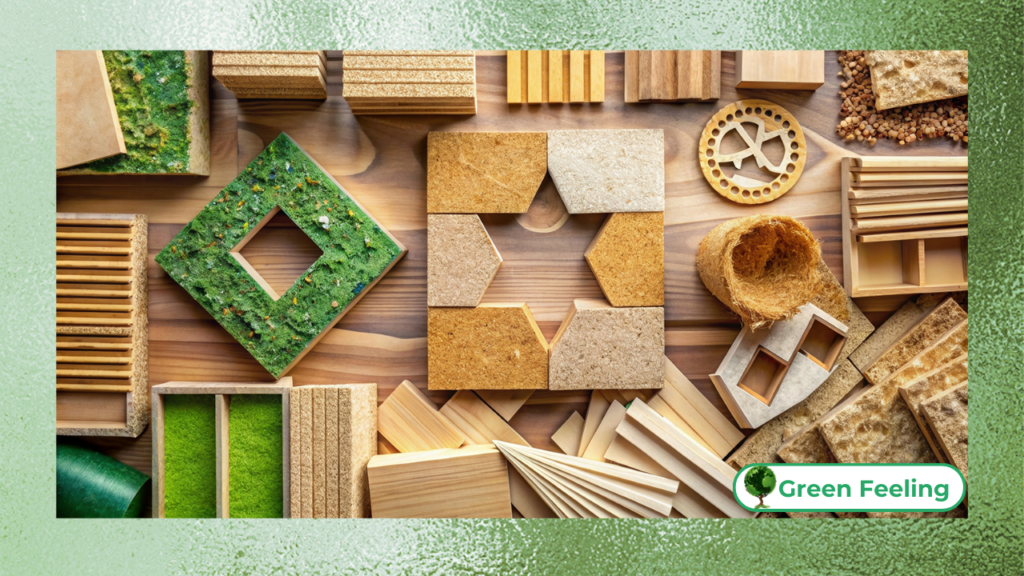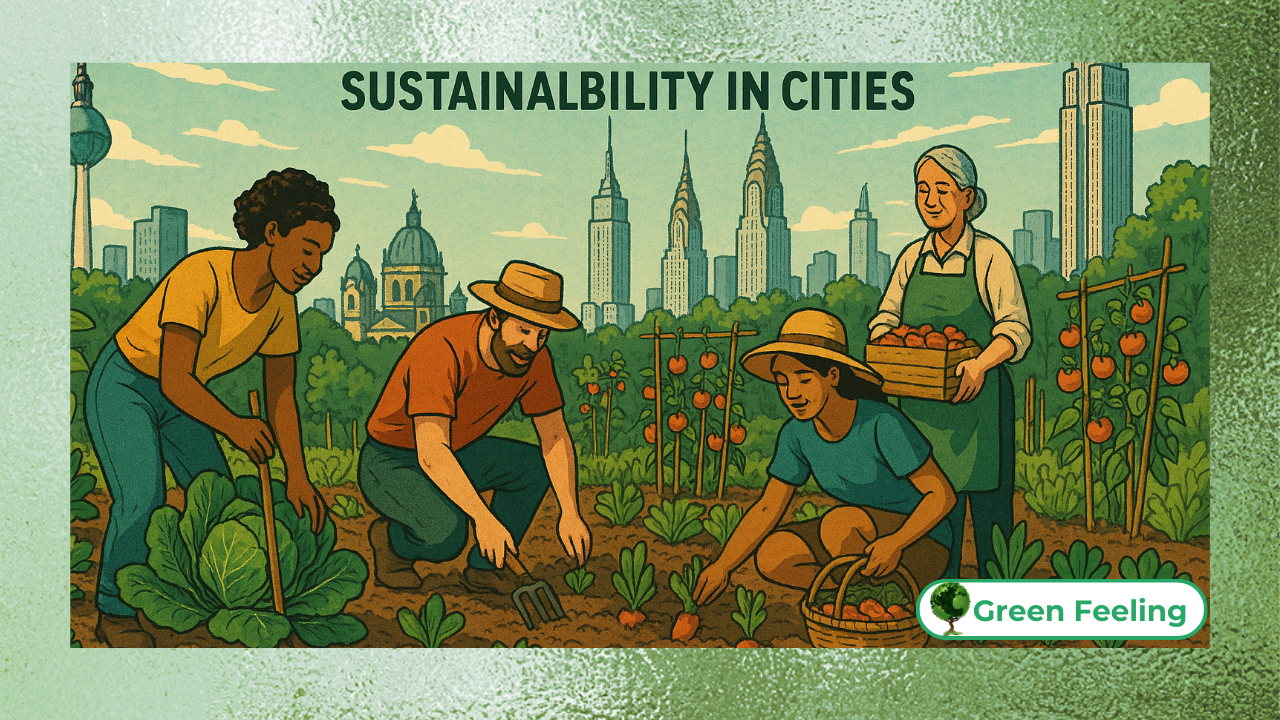Sustainable Building Materials for homes
As the world grapples with climate change and environmental degradation, the construction industry is increasingly turning to sustainable building materials.

These materials not only reduce the environmental impact of construction but also promote energy efficiency, durability, and healthier living spaces.
From recycled steel to bamboo, sustainable materials are revolutionizing the way we build.
This article explores the best sustainable building materials, their benefits, and how they are shaping the future of construction.
Whether you’re an architect, builder, or homeowner, this guide will help you make eco-friendly choices for your next project.
The Need for Sustainable Building Materials
The construction industry is one of the largest contributors to global carbon emissions, resource depletion, and waste generation.
Traditional building materials like concrete and steel have significant environmental footprints, from high energy consumption during production to long-term ecological impacts.
Sustainable building materials offer a solution by minimizing resource use, reducing emissions, and promoting circular economy principles.
These materials are designed to work in harmony with nature, ensuring that our built environment supports rather than harms the planet.
The shift toward sustainable materials is not just an environmental imperative but also an economic and social one.
As urbanization continues to rise, the demand for construction materials is growing exponentially.
By adopting sustainable alternatives, we can meet this demand without compromising the health of our ecosystems.
Moreover, sustainable materials often offer superior performance, such as better insulation, durability, and aesthetic appeal, making them a win-win for both the environment and building occupants.
From reducing energy bills to improving indoor air quality, the benefits of sustainable building materials are undeniable.
+ The Secrets of Brutalism: An analysis of concrete and functionality
Best Sustainable Building Materials
Below are some of the best sustainable building materials, along with their benefits and applications:
- Bamboo:
- Why It’s Great: Fast-growing, renewable, and highly durable.
- Applications: Flooring, walls, and structural elements.
- Recycled Steel:
- Why It’s Great: Reduces the need for virgin materials and is highly durable.
- Applications: Framing, roofing, and structural supports.
- Cross-Laminated Timber (CLT):
- Why It’s Great: Renewable, lightweight, and strong.
- Applications: Walls, floors, and roofs.
- Hempcrete:
- Why It’s Great: Made from hemp fibers and lime, it’s lightweight and carbon-negative.
- Applications: Insulation and non-load-bearing walls.
- Recycled Glass:
- Why It’s Great: Reduces waste and adds aesthetic appeal.
- Applications: Countertops, tiles, and decorative elements.
- Rammed Earth:
- Why It’s Great: Uses natural materials and provides excellent thermal mass.
- Applications: Walls and structural elements.
Benefits of Sustainable Building Materials

Using sustainable building materials offers numerous benefits, including:
- Reduced Environmental Impact: Lower carbon emissions and resource consumption.
- Energy Efficiency: Improved insulation and thermal performance.
- Durability: Longer-lasting materials reduce the need for replacements.
- Healthier Living Spaces: Non-toxic materials improve indoor air quality.
- Cost Savings: Lower energy bills and maintenance costs over time.
+ Nature and Design: Biophilic Architecture and Its Practical Applications
Sustainable Building Materials: A Table Overview
Below is a table summarizing the best sustainable building materials and their applications:
| Material | Benefits | Applications |
| Bamboo | Renewable, durable, fast-growing. | Flooring, walls, structural elements. |
| Recycled Steel | Reduces waste, highly durable. | Framing, roofing, structural supports. |
| Cross-Laminated Timber | Renewable, lightweight, strong. | Walls, floors, roofs. |
| Hempcrete | Carbon-negative, lightweight. | Insulation, non-load-bearing walls. |
| Recycled Glass | Reduces waste, aesthetic appeal. | Countertops, tiles, decorative elements. |
| Rammed Earth | Natural materials, excellent thermal mass. | Walls, structural elements. |
Challenges of Using Sustainable Building Materials
While sustainable materials offer many benefits, there are challenges to consider:
- Cost: Some sustainable materials can be more expensive upfront.
- Availability: Not all materials are readily available in all regions.
- Regulatory Barriers: Building codes may not always support the use of alternative materials.
- Education: Builders and architects may need training to work with new materials.
+ Green Cities: See the cities
Solutions to Overcome Challenges
To address these challenges, consider the following solutions:
- Government Incentives: Advocate for subsidies or tax breaks for sustainable construction.
- Local Sourcing: Use locally available materials to reduce costs and transportation emissions.
- Policy Advocacy: Work with policymakers to update building codes and standards.
- Training Programs: Invest in education and training for construction professionals.
Did You Enjoy Learning About Sustainable Building Materials?
Sustainable building materials are transforming the construction industry, offering eco-friendly alternatives that benefit both the environment and building occupants.
From bamboo to recycled steel, these materials are paving the way for a greener future.
By incorporating them into your projects, you can reduce your environmental footprint and create healthier, more resilient spaces.
As architect once said,
“Design is the first signal of human intention.” – William McDonough.
This quote reminds us that the choices we make in construction have a profound impact on the planet and future generations.
+ Vertical Gardens: The Green in Urban Spaces
Conclusion:
Sustainable building materials are more than just a trend—they are a necessity for creating a greener, more resilient built environment.
By choosing materials like bamboo, recycled steel, and hempcrete, we can reduce our environmental impact, improve energy efficiency, and create healthier living spaces.
While challenges remain, the benefits of sustainable materials far outweigh the costs, making them a smart choice for builders, architects, and homeowners alike.
The adoption of sustainable building materials is a critical step toward addressing global environmental challenges.
As we continue to innovate and develop new materials, the construction industry has the potential to lead the way in sustainability.
By embracing these materials, we can create buildings that are not only functional and beautiful but also in harmony with nature.
Let’s take the first step today and commit to building a greener future for generations to come. Together, we can create a world where sustainable construction is the norm, ensuring a healthier planet and a brighter future for all.
FAQ: Frequently Asked Questions About Sustainable Building Materials
1. What are sustainable building materials?
Sustainable building materials are eco-friendly alternatives to traditional construction materials. They are sourced, manufactured, and used in ways that minimize environmental impact, often incorporating recycled, renewable, or low-carbon components.
2. Why are sustainable building materials important?
They reduce carbon emissions, conserve natural resources, and promote energy efficiency. Additionally, they often improve indoor air quality and create healthier living environments.
3. Are sustainable building materials more expensive?
While some sustainable materials may have higher upfront costs, they often lead to long-term savings through energy efficiency, durability, and lower maintenance costs.
4. Can sustainable materials be used in all types of construction?
Yes, sustainable materials are versatile and can be used in residential, commercial, and industrial projects. However, their suitability depends on factors like local availability and building codes.
5. What is the most sustainable building material?
There is no single “most sustainable” material, as it depends on the application. Bamboo, recycled steel, and hempcrete are among the top choices due to their renewability, durability, and low environmental impact.
6. How can I find sustainable building materials near me?
Look for local suppliers specializing in eco-friendly materials, or check online directories like the Green Building Initiative or World Green Building Council for resources.
7. Do sustainable materials require special maintenance?
Most sustainable materials require similar or even less maintenance than traditional materials. For example, bamboo and recycled steel are highly durable and low-maintenance.
References and Further Reading
- MCDONOUGH, W.; BRAUNGART, M. Cradle to Cradle: Remaking the Way We Make Things. North Point Press, 2002.
- UNEP. Sustainable Buildings and Construction. United Nations Environment Programme, 2021.
- Sustainable Building Materials – World Green Building Council
- Benefits of Bamboo in Construction – Bamboo Bioproducts
- Innovations in Sustainable Construction – Green Building Initiative






